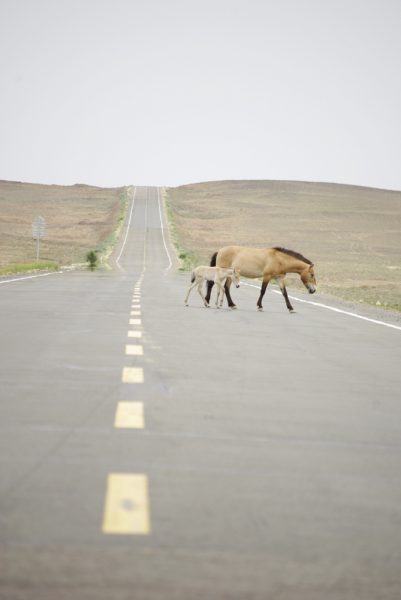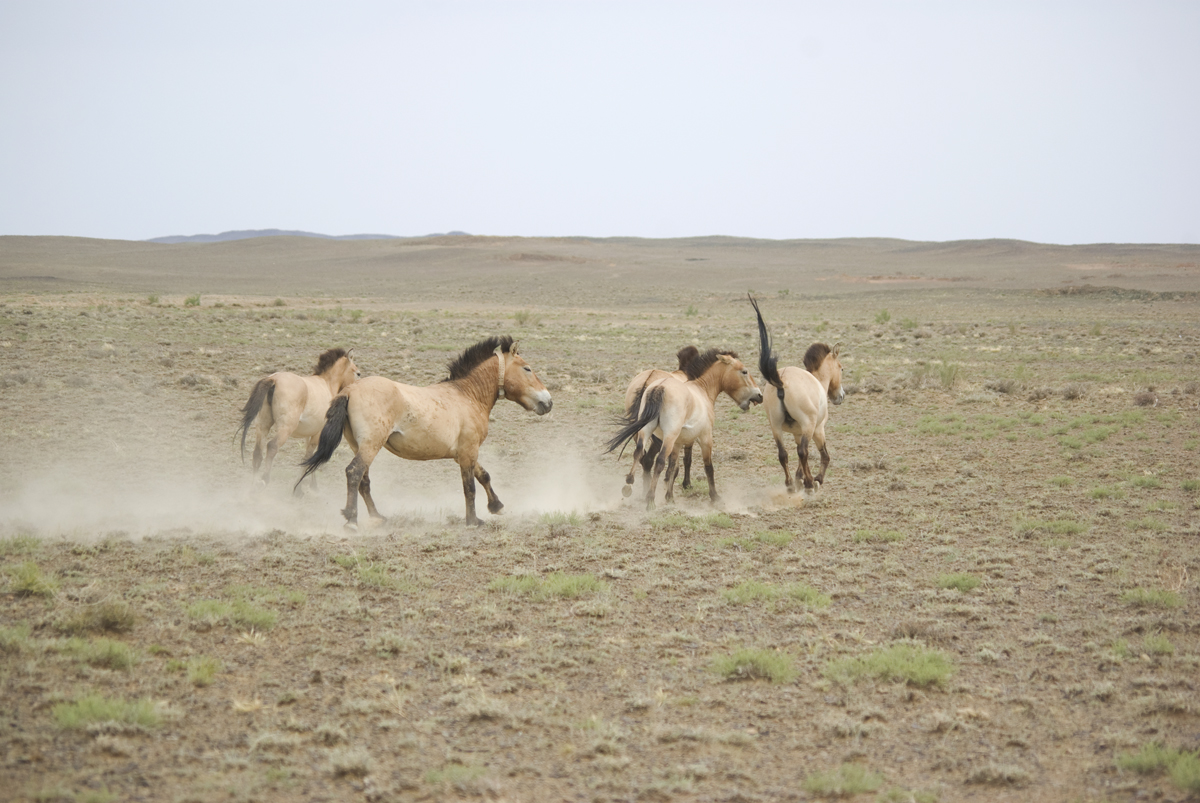
Stretching from the Ulungur River in the north to the Tian Shan Mountains in the south, the Kalamaili Nature Reserve is one of the largest of its kind in China. It covers a colossal area of more than 14,000 square kilometres (5,405 sq. mi), making it nearly twice the size of Yellowstone National Park in the USA! That being said, its location deep within the Gobi Desert means it doesn’t look like your average nature reserve. There are no bubbling brooks, lush meadows, or towering forests here; only barren sands, hardy desert shrubs, and the looming Kalamaili or “Black Mountains”, which cut through the heart of the reserve and lend it its name.
These mountains are ancient, dating back to a time when the Kalamaili Reserve was once a verdant paradise. Millions of years ago, they were buried by a vast ocean that covered most of western China. As the ocean receded, tectonic forces pushed a rock basin upwards and formed the mountain range we see today. Where formerly it was submerged under a sea of water, now it is fittingly surrounded by a sea of sand. When the range was formed, the climate was much warmer and far more humid. Small lakes dotted throughout its expanse provided the perfect environment for gymnosperms and ferns to thrive.
During the Triassic and Jurassic Periods, these small pockets of vegetation blossomed into ancient forests and provided a habitat for one of earth’s most enduringly fascinating inhabitants: the dinosaurs. Nowadays all that is left are their desiccated bones, tossed among the shards of petrified wood and blackened rocks that form the mountain range. As the climate in the region became more arid over time, plant species were gradually squeezed out, until only the hardiest could survive in this dry expanse of sand. Every year, the only respite that the reserve receives is a smattering of winter snow and seasonal rain, which accumulates into small salt-spring pools.
These pools are essential to the survival of plant and animal life in the Kalamaili. Hostile though the reserve may seem, it is populated by over 280 animal species, including the Mongolian wild ass, goitered gazelle, Eurasian wolf, red fox, Argali sheep, and Bactrian camel. It is a case of quality over quantity; the reserve is only able to support around 30,000 animals, meaning the diversity of species is far greater than the density. The reserve’s most famous inhabitant is also one of its rarest: the elusive Przewalski’s horse.
The horse is named after the Russian officer and biologist Nikolai Przhevalsk, who led a secret expedition into the Dzungarian Basin in 1876 and discovered the wild horses just north of the Kalamaili Mountains. He sent specimens back to Europe, but the species wouldn’t be named until 1881. In a sad twist of fate, by the time the Przewalski’s horse was officially recognised, it had simultaneously become the last known wild horse in Eurasia. In its heyday, it dominated the Kalamaili, with herds of these hardy wild horses coursing across the desert steppe. However, as is so often the case, the expansion of human settlements into the area drove the horses out and their population rapidly plummeted.

No more than a century after they had been discovered, the Przewalski’s horse had gone extinct in China. It wasn’t until 2001 that the Kalamaili would once again hear the thundering of hooves, when the Xinjiang Forestry Department decided to reintroduce a group of 27 Przewalski’s horses into the reserve. Their efforts were largely successful and nowadays there are over 100 horses thriving in the reserve. With their robust frames, square-shaped heads, and coarse hair, they are distinctly different from their domesticated cousins.
Alongside its status as a haven for wild ungulates, the Kalamaili Nature Reserve is an important stopover on the migratory route of numerous bird species, such as golden eagles and saker falcons. Some will stop merely to eat before taking off on another long flight, while others will settle for the season and stay to breed. Like the birds that nest here every year, the Kazakh nomads move from the alpine meadows of the Altai Mountains in the fall and take up residence in the southern Kalamaili during the winter, where the weather is milder and the snow cover is thinner. Until late March to early April, they will remain in their winter tents and graze their livestock on the grasses of the craggy mountains. Where before humans caused so much devastation, nowadays the Kalamaili is a place where man and nature live in harmony.